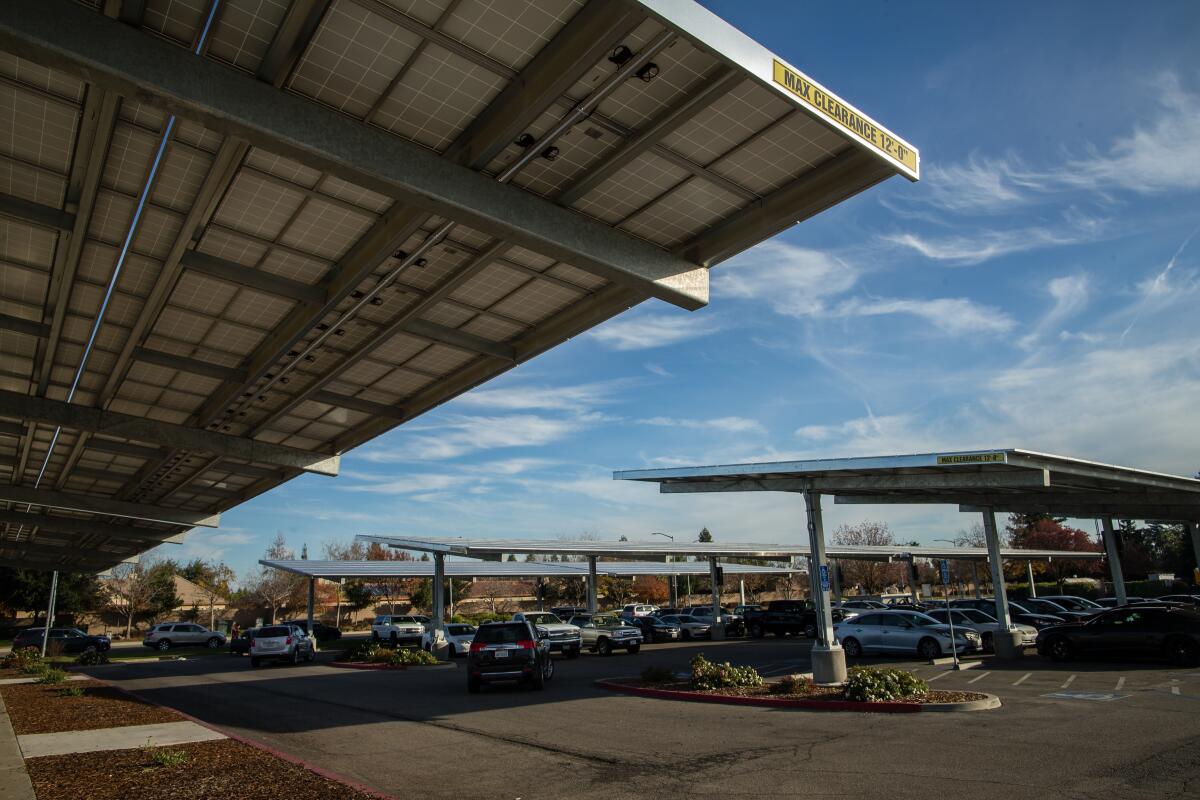Letters to the Editor: Of course solar in cities makes sense — but not to big utilities

- Share via
To the editor: The Times’ editorial board correctly identifies unused or underused public and private lands as good sites for solar arrays. However, the state highway rights of way are mostly some distance from urban residents, so transmission lines would be needed. With them come capital costs, energy efficiency losses and environmental concerns.
The better solution is to put solar on urban commercial property sites, where power generation would be closest to users. Commercial building rooftop arrays have a low installed cost due to minimal racking and mounting components on flat roofs.
The legislative proposal by state Sen. Josh Becker (D-Menlo Park) does provide some helpful financial incentives for property owners. But the biggest obstacle is not the reluctance of property owners. It is the resistance of the utilities.
Whether public or private, utilities are monopolies that seek to make money for their owners. Thus, it makes sense for them to invest in a distant desert solar power plant with long transmission lines, and earn a guaranteed return on all that invested capital. They prefer that over buying local power, even though ratepayers would opt for the cheaper local solution.
If you doubt this analysis, consider that no private utility has a program to purchase excess electricity from any private property owner at anything close to an economically viable rate.
Who thinks the utility lobby will be excited about Becker’s bill?
Eric Winter, Manhattan Beach
..
To the editor: As a scientist who recently published a study about the ecosystem implications of putting solar canopies in urban parking lots in California, I was glad to see The Times’ editorial board support legislation that would encourage doing just that.
Not only do solar canopies in parking lots make good use of space for renewable energy and create shade that keeps cars cooler; they can also be good for urban ecosystems.
My co-authors and I found that integrating small vegetation areas like flowers and bushes under the solar canopies yields significant benefits for local environments and biodiversity. Building in such green spaces is relatively common, easy and aesthetically pleasing, and it supports ecosystem services like air purification.
As the more renewable energy is deployed in cities and along highways, it’s worth also planning for biodiversity and integrating vegetation to support urban ecosystems.
John Armstrong, Seattle
The writer is an assistant professor of environmental studies at Seattle University.



